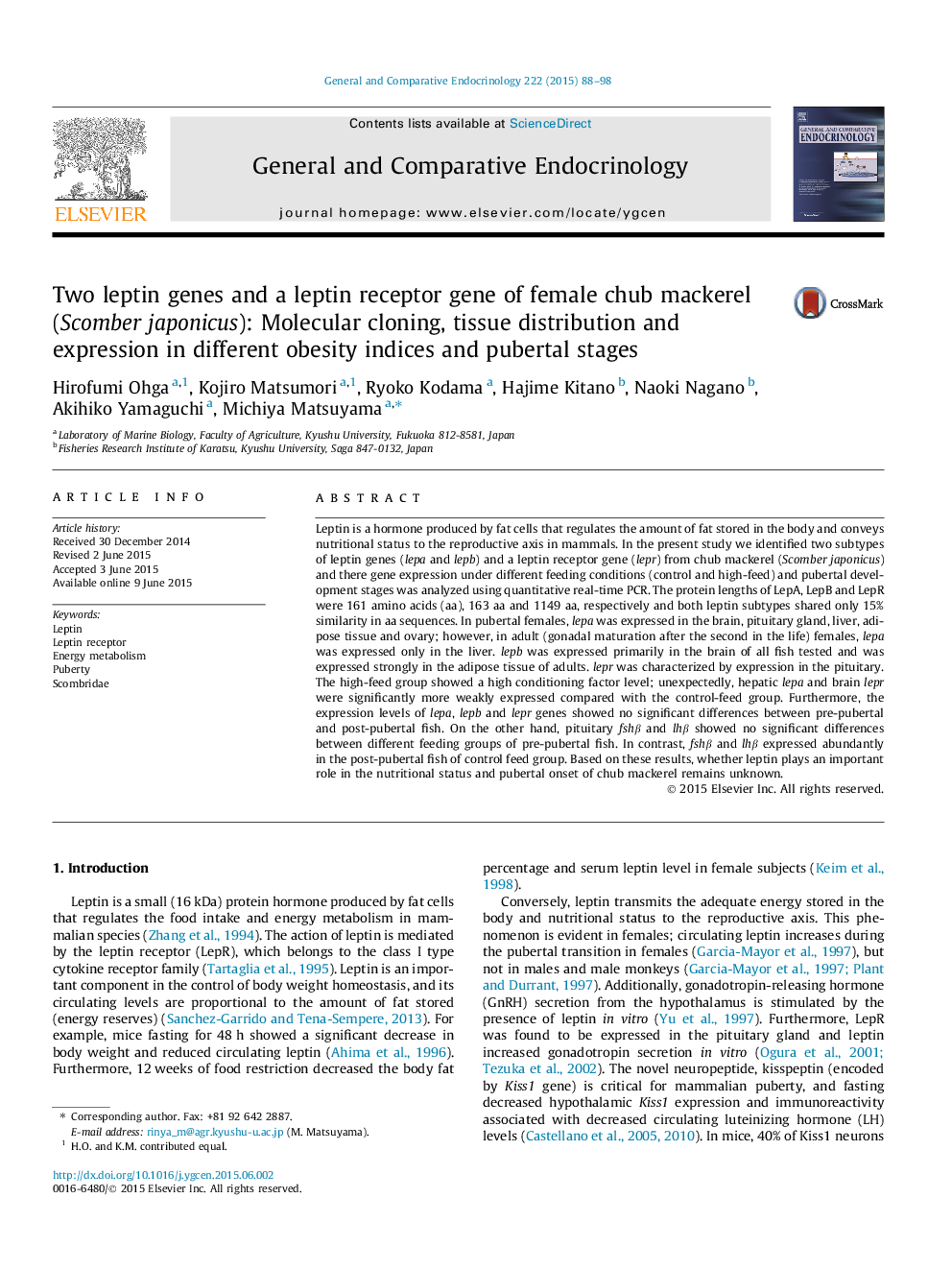| Article ID | Journal | Published Year | Pages | File Type |
|---|---|---|---|---|
| 5900919 | General and Comparative Endocrinology | 2015 | 11 Pages |
•Identified two subtypes of leptin showing high similarity with mammalian counterpart.•Two leptin subtypes showed different expression patterns in accordance with age.•Cloned long isoform of leptin receptor and characterized by expression in pituitary.•Hepatic lepa and brain lepr showed weaker expressions under overfeeding condition.•Leptin and its receptor genes showed no variations in different maturational stages.
Leptin is a hormone produced by fat cells that regulates the amount of fat stored in the body and conveys nutritional status to the reproductive axis in mammals. In the present study we identified two subtypes of leptin genes (lepa and lepb) and a leptin receptor gene (lepr) from chub mackerel (Scomber japonicus) and there gene expression under different feeding conditions (control and high-feed) and pubertal development stages was analyzed using quantitative real-time PCR. The protein lengths of LepA, LepB and LepR were 161 amino acids (aa), 163 aa and 1149 aa, respectively and both leptin subtypes shared only 15% similarity in aa sequences. In pubertal females, lepa was expressed in the brain, pituitary gland, liver, adipose tissue and ovary; however, in adult (gonadal maturation after the second in the life) females, lepa was expressed only in the liver. lepb was expressed primarily in the brain of all fish tested and was expressed strongly in the adipose tissue of adults. lepr was characterized by expression in the pituitary. The high-feed group showed a high conditioning factor level; unexpectedly, hepatic lepa and brain lepr were significantly more weakly expressed compared with the control-feed group. Furthermore, the expression levels of lepa, lepb and lepr genes showed no significant differences between pre-pubertal and post-pubertal fish. On the other hand, pituitary fshβ and lhβ showed no significant differences between different feeding groups of pre-pubertal fish. In contrast, fshβ and lhβ expressed abundantly in the post-pubertal fish of control feed group. Based on these results, whether leptin plays an important role in the nutritional status and pubertal onset of chub mackerel remains unknown.
